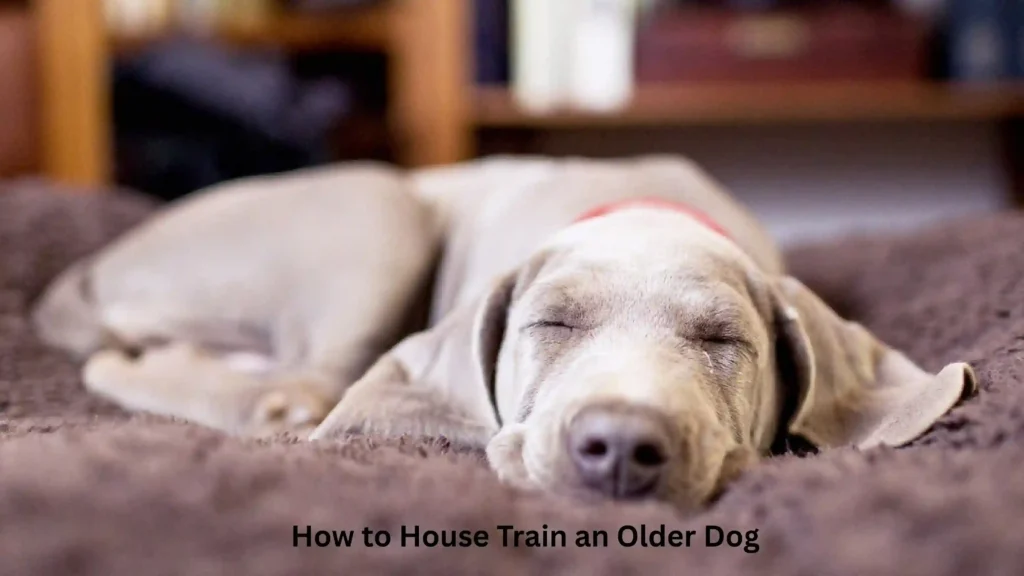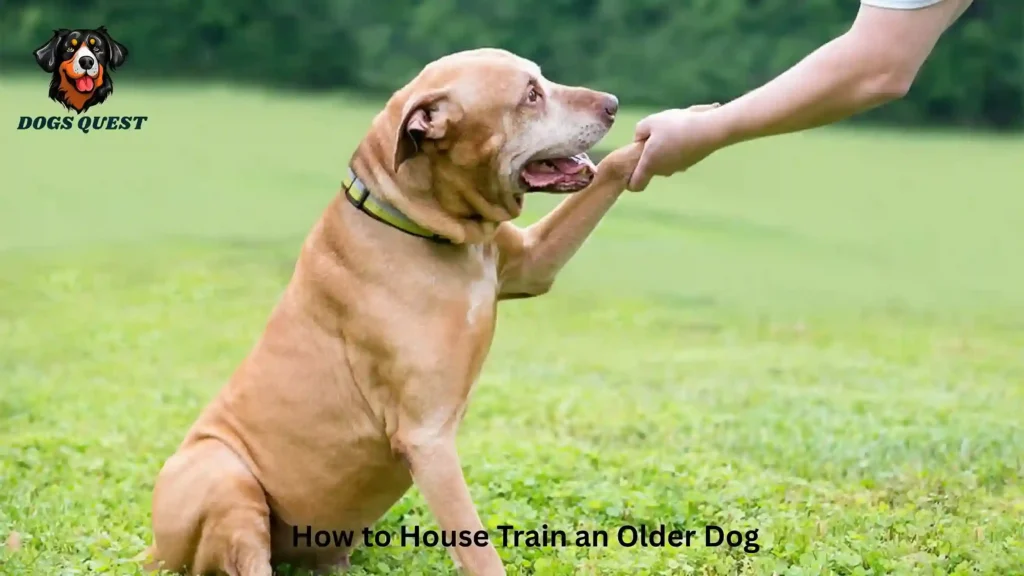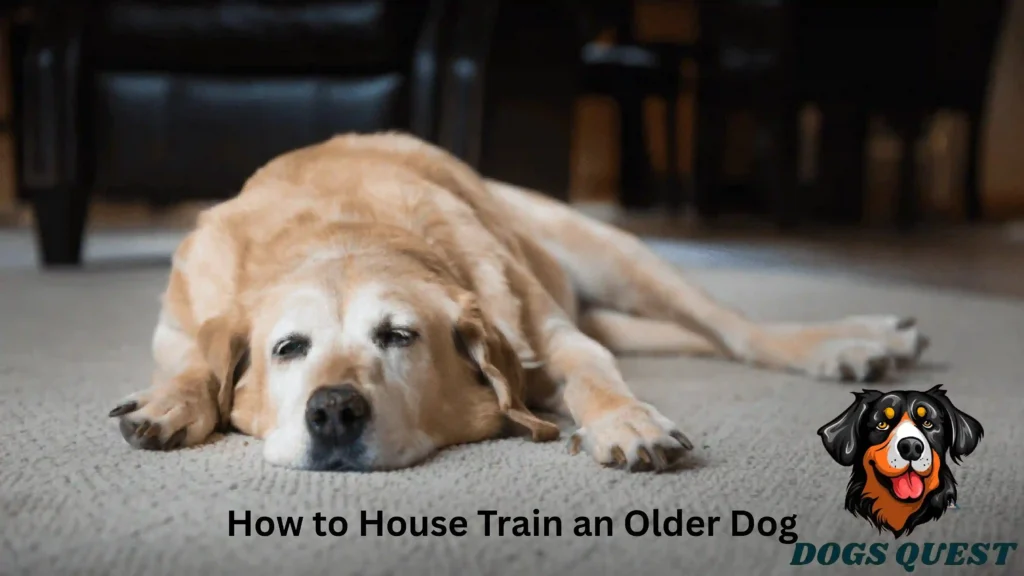Discover how to house train an older dog with 7 proven steps. Learn effective tips, routines, and positive reinforcement strategies to help your senior dog adapt quickly to a clean, accident-free lifestyle.
Introduction:
Many pet parents wonder if it’s too late to teach an dog new habits. The good news is you absolutely can house train an older dog with the right patience, consistency, and positive reinforcement. Unlike puppies, older dogs may already have ingrained routines, but that doesn’t mean they can’t learn new ones.
Whether you just adopted a rescue, are caring for a senior companion, or are retraining a dog with bad habits, this guide will walk you through how to house train an dog step by step.
By the end, you’ll not only know the process but also gain confidence that your furry friend can enjoy a cleaner, more comfortable life indoors.
Why Learning How to House Train an Older Dog Is Different

Existing Habits
Older dogs may already have developed behaviors—both good and bad. If a dog has been allowed to relieve itself indoors, you’ll need to unlearn old habits before teaching new ones.
Health Considerations
Senior dogs may face age-related challenges like arthritis, reduced bladder control, or slower mobility. These can affect the house training process and require adjustments in schedules.
Emotional Factors
Some rescue dogs may have experienced neglect or inconsistent training in the past. Learning how to house train an older often requires building trust and creating a safe environment first.
7 Steps on How to House Train an Older Dog
Establish a Consistent Routine
Dogs thrive on predictability. Take your dog outside at the same times every day—morning, after meals, before bed, and after play. This regularity is the foundation of house training an older dog.
- Morning potty trip immediately after waking
- After every meal or water break
- Every 3–4 hours during the day
- Final potty break before bedtime
Choose a Designated Potty Spot
Pick one spot in your yard or nearby area and always take your dog there. Over time, the scent association helps reinforce house training. Praise and reward when your dog goes in the correct spot.
Use Positive Reinforcement
The fastest way to succeed in house training an older dog is through rewards. Every successful potty outside should be followed by:
- Verbal praise (“Good dog!”)
- Small treats
- Gentle petting
This creates a strong connection between outdoor pottying and good experiences.
Watch for Signs Your Dog Needs to Go
Older dogs give subtle signals when they need relief. Pay attention to:
- Pacing or circling
- Whining or scratching at the door
- Sniffing the floor or looking restless
Catching these cues early prevents accidents and reinforces good habits in house training an older dog.
Manage Accidents Calmly
Accidents will happen. Instead of scolding, calmly clean up with an enzyme-based cleaner to remove odor. Punishment only creates fear, which slows progress when learning how to house train an older dog.
Crate Training as a Helpful Tool
Crates can provide a safe space and teach bladder control. Dogs naturally avoid soiling their sleeping area. Use the crate only for short, comfortable periods—never as punishment.
Be Patient and Consistent
House training takes time, especially for senior pets. Celebrate small wins, stay consistent, and remember that repetition is key to house training an older dog successfully.
Common Challenges When House Training an Older Dog

Medical Issues
If accidents persist despite training, consult a vet. Issues like urinary tract infections, diabetes, or kidney disease can affect bladder control.
Separation Anxiety
Some older dogs struggle when left alone, leading to accidents. Short practice separations, calming toys, and routine can ease this.
Previously Untrained Dogs
Rescue dogs who never lived indoors may take longer to learn. Extra patience and positive reinforcement make the difference in house training an older dog.
Extra Tips for Faster Results

- Keep feeding times consistent – predictable meals lead to predictable bathroom breaks.
- Limit water before bedtime – reduce nighttime accidents.
- Use potty pads indoors (if necessary) – gradually move them closer to the door, then outside.
- Praise immediately after success – timing matters when teaching how to house train an older dog.
- Stay calm during setbacks – progress may be slower, but persistence pays off.
Why Patience Is the Secret Ingredient
Training an older dog requires empathy. Your dog may not learn as quickly as a puppy, but with love, consistency, and rewards, they will adapt. The bond you build during this journey will strengthen trust and companionship.
Remember, every dog learns at its own pace. The key is not perfection but progress.
Final Thoughts on How to House Train an Older Dog
House training an older dog may sound challenging, but with structured routines, positive reinforcement, and patience, it’s entirely possible. By following the 7 steps above, you’ll help your dog gain confidence, reduce stress, and enjoy a clean, happy home.
If you’ve recently adopted or are caring for a senior pup, don’t lose hope. Learning how to house train an older dog is one of the most rewarding experiences for both pet and owner.
Frequently Asked Questions
Q1: How long does it take to house train an older dog?
It depends on the dog’s background and health. With consistency, most older dogs improve within a few weeks, though full reliability may take a couple of months.
Q2: Is it harder to house train a senior dog than a puppy?
Not necessarily. Older dogs may actually learn faster because they can hold their bladder longer and already understand routines. The challenge comes if they’ve had years of bad habits.
Q3: Should I wake my dog at night for potty breaks?
For younger seniors, usually no. But if your older dog has bladder issues, a quick late-night potty break may prevent accidents.
Q4: Can you house train a dog that’s 10 years old?
Absolutely. Age doesn’t prevent learning. With patience and adjustments for health, you can successfully house train even a 10-year-old dog.

